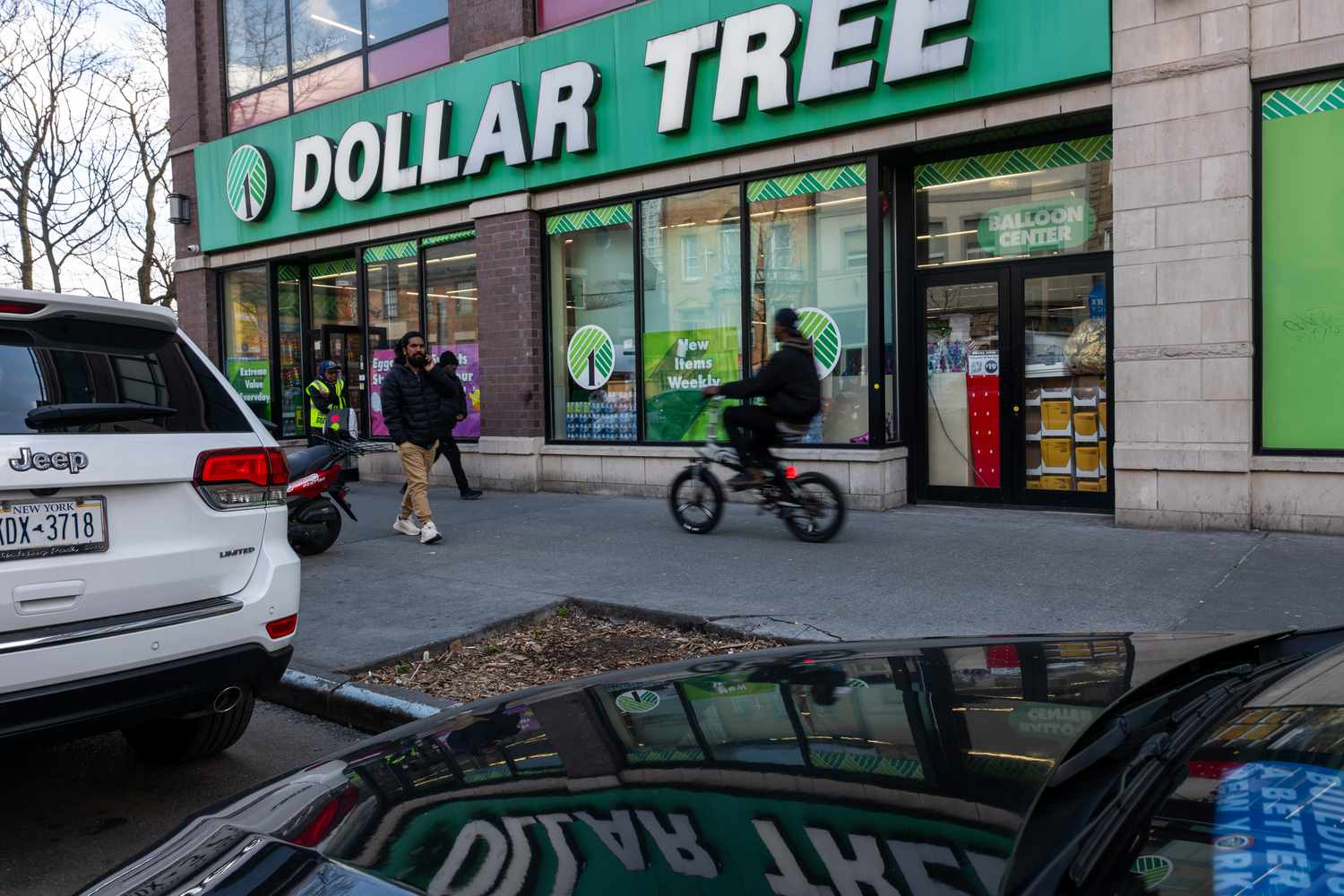
Key Takeaways
- Discount shops’ gains among higher-income consumers suggests flagging consumer sentiment has motivated them to save, said Mark Mathews, executive director of research at the National Retail Federation.
- Although the economy is fairly healthy by a number of metrics, consumer sentiment has fallen in recent months and layoffs have been growing.
- Behavioral shifts may be most pronounced among people with incomes in the second lowest quartile, said Mickey Chadha, vice president of corporate finance at Moody’s Ratings.
It’s not just lower-income Americans who are feeling financial stress these days.
Families with six-figure incomes are becoming regulars at dollar and thrift stores, which experts say marks yet another sign of pressure felt by the U.S. consumer.
Metrics suggest Americans’ financial health is holding up—but under duress. Consumers’ confidence in the economy has fallen as the U.S. has levied tariffs on imports from several trading partners, according to Mark Mathews, executive director of research for the National Retail Federation. And while consumer sentiment held steady from April to May, it declined in prior months as concerns about inflation hit levels last seen in 1981.
Unease has prompted consumers to save, in part by “trading down” or switching to cheaper versions of products, Mathews said, while executives at several retailers have said higher-income households are seeking value to stretch their budgets. Some households have less to spend because they bought electronics and cars sooner than they envisioned in an attempt to get ahead of the import taxes, according to Mathews.
“They are being much more careful with their money,” Mathews said. “You see consumers trade down either from purchasing brand name products to purchasing generic products, or moving from mid- to higher-level price point businesses to lower-level price point businesses.”
Retailers See Customers on a ‘Quest for Value’
Households making more than $100,000 annually have been flocking to Walmart (WMT), known for its “rollback” prices, its leaders said. Dollar Tree (DLTR) is gaining traction with this group with new merchandise, the chain said last week. And six-figure earners have become a bigger audience for the secondhand store operator Savers Value Village (SVV), its executives said.
“We saw the highest percent of trade-in customers we’ve had in the last four years,” Dollar General (DG) CEO Todd Vasos said last week, a reference to middle- and higher-income shoppers.
The changes may be most pronounced among Americans with incomes in the second lowest quartile, said Mickey Chadha, vice president of corporate finance at Moody’s Ratings. Wealthier consumers may not be feeling squeezed yet, while lower-income households have already adjusted their behavior due to financial stress, Chadha said.
Sporting goods retailer Academy Sports & Outdoors (ASO), is doing less business with households earning under $30,000 annually, CEO Steve Lawrence said at a conference in April. He theorized that these customers are consolidating their shopping outings at places like Walmart.
Overall consumer spending has been relatively robust and employment rates remain healthy, analysts said. But layoffs have ticked up this year, touching the highest levels since the pandemic. Uncertainty about the economy may be making people more cautious, said Bill Fahy, vice president of corporate finance at Moody’s Ratings.
The budget-mindedness has benefited retailers with a reputation for offering value, such as Academy Sports & Outdoors, which has been drawing higher-earners, Lawrence said in April, according to a transcript provided by AlphaSense.
“As consumers increasingly have trouble affording their lifestyle and switch to credit cards and buy now, pay later, solutions like that, there’s—even at those upper income quintiles—there’s a quest for value,” Lawrence said.

Leave a Reply